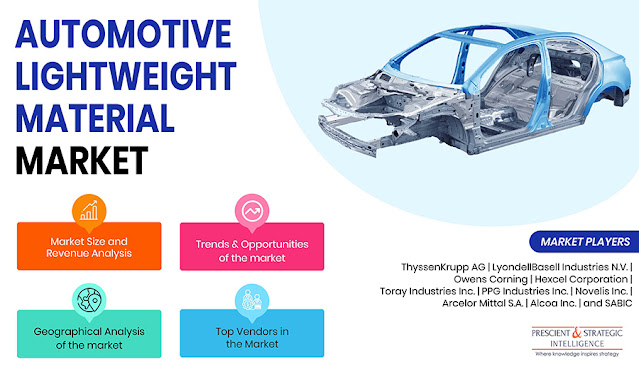International organizations, along with the central and state governments in several countries, are working on reducing greenhouse gas (GHG) emissions. For this, they are implementing stringent guidelines and standards, particularly for the automotive sector, which is one of the largest contributors to air pollution. For example, various European and North American governments are supporting the adoption of lightweight vehicles to significantly reduce CO2 emissions by 2025. Elsewhere, in Asia-Pacific, China, India, Australia, and Indonesia are implementing similar policies, considering how polluted they are.
Moreover, the growing focus on a higher fuel efficiency will accelerate the market for automotive lightweight material at a CAGR of 14.0% during forecast period, since standing at $77.1 billion in 2015. Since lighter automobiles require less energy for acceleration as compared to heavier ones, automakers are adopting lightweight materials to enhance the fuel efficiency of vehicles. According to the U.S. Department of Energy (DoE), “A 10% reduction in vehicle weight can result in a 6%-8% fuel economy improvement.”
 |
| To learn more about this report: https://bit.ly/33LSm3P |
In the recent past, North America utilized the highest volume of automotive lightweight material due to the regulatory pressure by the governments to curtail CO2 emissions. For example, the U.S. aims to increase its fuel economy to 54.5 miles per gallon by 2025, under its Corporate Average Fuel Economy (CAFE) standards. These norms apply to light-duty vehicles produced between 2017 and 2025. Following North America, Europe has emerged as the second-largest consumer of such materials, on account of almost the similar reasons that push their usage in Canada and the U.S.
As per P&S Intelligence, the APAC automotive lightweight material market will register the fastest growth in the foreseeable future. This can be ascribed to a surge in vehicle production and high demand for light commercial vehicles and passenger cars in the region. This can be attributed to the improving living standard in APAC, especially in India and China. Although automobile manufacturers in APAC use lower volumes of lightweight materials than those in Europe and North America, an escalation in the vehicle production figures will boost their adoption in APAC in the coming years.
Therefore, with the surging focus on reducing GHG emissions and increasing the fuel efficiency, automobile manufacturers are adopting lightweight materials during production.








No comments:
Post a Comment